World Sight Day 2024: Love your (child's) eyes
World Sight Day is Oct. 10 and this year the focus is on the importance of eye care for children. Learn about some of the impactful work ARVO members are doing in the pediatric field and what keeps them motivated.
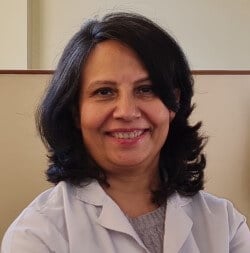 Srijana Adhikari, MD
Srijana Adhikari, MD
Associate Professor
Tilganga Institute of Ophthalmology
Kathmandu, Nepal
My research studies Nepalese children with visual impairment on etiology, activity and sleeping patterns, participation and quality of life.
My study identified a changing trend in the etiology of blindness and vision impairment (VI) in Nepal, indicated similar levels of sedentary behavior, but higher levels of light moderate and vigorous physical activities, among children with VI compared to normally sighed children, found better quality of sleep compared to normally sighed peers and activity, participation as well as eye related quality of life are affected in children with VI compared to normally sighted peers.
The findings of my study are valuable for children, parents, care givers, teachers and health care professionals working with these children. We recommend schools administrations and government policy makers to implement the rehabilitation programs tailored to address the needs of these children with VI and blindness in Nepal.
Each child with VI is unique and different. The rehabilitation needs of each child should be measured and they should be provided with the proper rehabilitation services and opportunity to participate in various life activities as much as their normally sighted peers. They have the potential to lead normal lives in their own term.
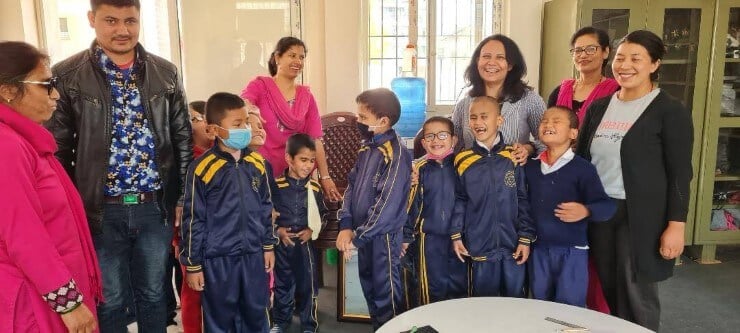
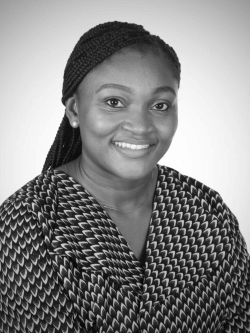 Onyeka Amiebenomo, OD, MSc, PhD
Onyeka Amiebenomo, OD, MSc, PhD
Senior Lecturer in Optometry
School of Health and Social Wellbeing
University of the West of England
Bristol, United Kingdom
Ensuring a child with learning disability has good eye health and vision makes an already complex journey easier. I love to make that difference, knowing that children and young adults have the potential to achieve great things if eye health and vision problems are not a hindrance.
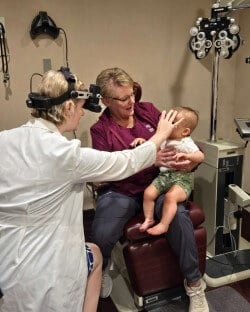 Meghan Berkenstock, MD
Meghan Berkenstock, MD
Associate Professor, Ophthalmology
Wilmer Eye Institute, Baltimore, Md.
As a uveitis specialist, I am lucky enough to work with children and my current research is figuring out the incidence and prevalence of JIA and the associated complications. The best part of my day is working with children, who bring smiles to my face. I'm so lucky to have long-term relationships with them and their families, in order to keep them seeing well into adulthood.
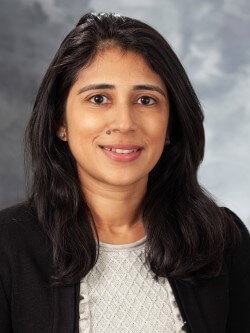 Roomasa Channa, MD
Roomasa Channa, MD
Assistant Professor
Department of Ophthalmology and Visual Sciences, School of Medicine and Public Health
University of Wisconsin-Madison
Madison, Wis.
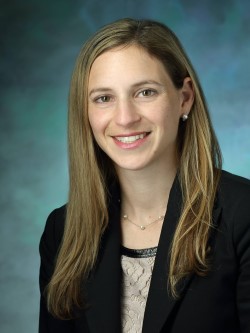 Risa Wolf, MD
Risa Wolf, MD
Associate Professor, Pediatric Endocrinology
Johns Hopkins University School of Medicine
Baltimore, Md.
Our diabetic retinopathy screening program for kids improved screening rates among our kids from 49% prior to AI-based screening to 95% after AI-based screening. This improvement was seen across racial, ethnic and socioeconomic groups. Since then we have expanded our work to conduct randomized clinical trials showing the impact of AI-based eye screening in reducing disparities in screening. Learn more about the study
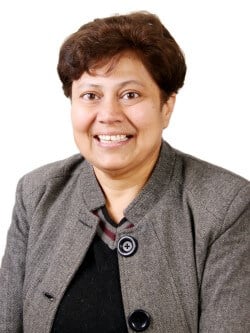 Zia Chaudhuri, MS, DNB, MNAMS, FRCS (Glasg), FICO, PhD, FAMS
Zia Chaudhuri, MS, DNB, MNAMS, FRCS (Glasg), FICO, PhD, FAMS
Professor of Ophthalmology
Lady Hardinge Medical College, University of Delhi
Delhi, India
I am a fellowship trained pediatric ophthalmologist, strabismologist, neuro-ophthalmologist as well as an ophthalmic geneticist and have been providing my services for the past 12 years to the Kalawati Saran Children’s Hospital (KSCH), which is affiliated to the University of Delhi for training purposes.
KSCH was inaugurated in March 1956 by Lady Edwina Mountbatten and is currently one of the largest tertiary care pediatric hospitals supported by the Government of India with a referral catchment area from most of northern India. It incorporates all pediatric, neonatology and adolescent medicine services as well as pediatric allied services like pediatric ophthalmology to which I contribute.
As the ophthalmology services are within the set-up of a large pediatric facility, I see children presenting with ophthalmic manifestations of systemic pediatric and neurological conditions like cerebral palsy, intellectual disability due to systemic causes, cerebral visual impairment, autism, genetic disorders, etc as well as primarily ophthalmic disorders like strabismus, cataracts, glaucoma, high refractive errors especially the myopia pandemic, which is extensively observed now in young adolescent children of south Asian origin. The facility is well equipped with ophthalmic diagnostic as well as therapeutic options for the management of most pediatric ophthalmic conditions, which goes a long way in preserving or rehabilitating vision in young children and adolescents, thus decreasing the preventable and curable economic burden of these conditions.
Together, we are creating a world where every child has eye health that is accessible, available and affordable.
Alina Dumitrescu, MD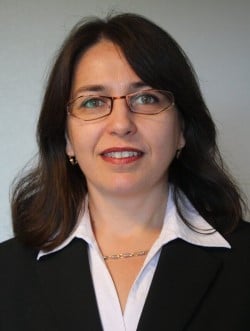
Associate Professor of Pediatric Ophthalmology and Strabismus, Inherited Eye Disease
Associate Professor of Pediatrics
Chakraborty Family Professor in Pediatric Genetic Retinal Diseases
Director of Quality Assurance – Ophthalmology
Director, Pediatric Ophthalmology Division
University of Iowa Hospitals and Clinics
Iowa City, Iowa
Working with children has shown me the profound impact early eye care can have on their lives. My young patients teach me humility and resilience every day.
In pediatric ophthalmology and inherited eye disorders, we are committed to providing the best possible care to our young patients, training the next generation of physicians, and advancing ophthalmology and visual science through groundbreaking research. The mission is to ensure that every pediatric eye disorder is diagnosed and treated early so no child loses their eyesight to a preventable or treatable disease. Together, we fight for the vision and future of every child. Let's empower young people to love and protect their vision because healthy eyes open doors to brighter futures.
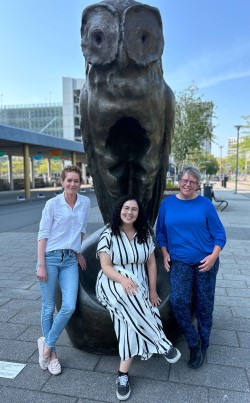 Salma El Emrani, BS
Salma El Emrani, BS
PhD candidate
Leiden University Medical Center
The Netherlands
Pre-term infants are at risk of multiple morbidities including the sight-threatening disease retinopathy of prematurity, which is the cause of 40% of global childhood blindness. Our team has recognized the importance of a healthy intrauterine environment and has recently discovered three novel placental risk factors of retinopathy of prematurity which can aid in identifying high-risk infants in an earlier stage than currently possible. Hence, optimal collaboration between ophthalmologists, neonatologists and pathologists is crucial in order to give every preterm infant the optimal chance of a good start to a healthy life.
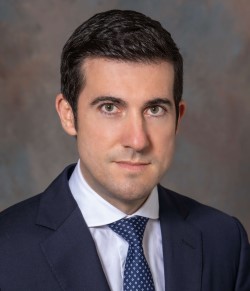 Alfonso L. Sabater, MD, PhD
Alfonso L. Sabater, MD, PhD
Associate Professor of Clinical Ophthalmology
Medical Director, Ocular Surface Program
Director, Corneal Innovation Lab
Bascom Palmer Eye Institute, University of Miami Miller School of Medicine
Miami, Fla.
One of the most profound experiences in my career was treating a young patient with a rare genetic eye condition using a novel gene therapy developed specifically for him. This therapy allowed us to restore his vision, which was an incredibly moving moment for all of us involved. To witness his world light up with colors and shapes after several years of not being able to see was unforgettable. His reaction, filled with awe and joy, is a powerful reminder of the impact we can have through advancements in eye care.
 Yap Tiong Peng, OD, MSc PhD, DIC, FAAO, FACBO, FOVDR
Yap Tiong Peng, OD, MSc PhD, DIC, FAAO, FACBO, FOVDR
Senior Consultant
IGARD Vision Therapy Center
Singapore
Lazy eyes is another name for amblyopia, a medical condition where the eyes do not see well because of the poor development of the visual system from the brain. Treatment typically begins with wearing spectacles, if needed, or to use an eye patch. But more is needed in vision therapy to teach the brain how to use both eyes together.
As a clinician-scientist, my mission is to bridge clinical care with scientific research. My intention is to improve clinical care, and to develop novel therapies to treat amblyopia successfully. While I work in clinical practice in Singapore, my recent involvement in research has helped to advance our understanding of this condition. With my involvement with ARVO, some of my research has already been published in Investigative Ophthalmology and Visual Science and other ophthalmic journals. On World Sight Day, let's remember the importance of early eye checks for children and spread the message to others who may not be aware of this condition. Together, we can make a positive difference in the lives of children and the people around us. Learn more about amblyopia and my research
 Ebenezer Zaabaar, OD
Ebenezer Zaabaar, OD
PhD candidate
Department of Ophthalmology & Visual Sciences, Faculty of Medicine
The Chinese University of Hong Kong
Kowloon, Hong Kong
I am excited to share a few words about the significance of my work on the evaluation of shared genetic variants for refraction and related ocular endophenotypes in children. The project holds a deep personal meaning for me, as I have witnessed firsthand in clinical practice the life-changing impact that myopia complications can have.
One memorable moment I experienced while working with these young participants is witnessing the excitement and curiosity they show towards the research. Many are eager to learn about the science behind it and how the findings could impact their eye health. Their engagement and willingness to contribute to the study are truly inspiring and reinforce the importance of this work for the future of vision care. It is my sincere hope that our findings will not only expand the scientific community's understanding of the genetic underpinnings of myopia in children but also pave the way for more effective and tailored interventions that can empower children and young people to "Love Their Eyes" with confidence and hope.
Is your research about improving children's eye health? Share below, or on social media and tag @ARVOinfo!
